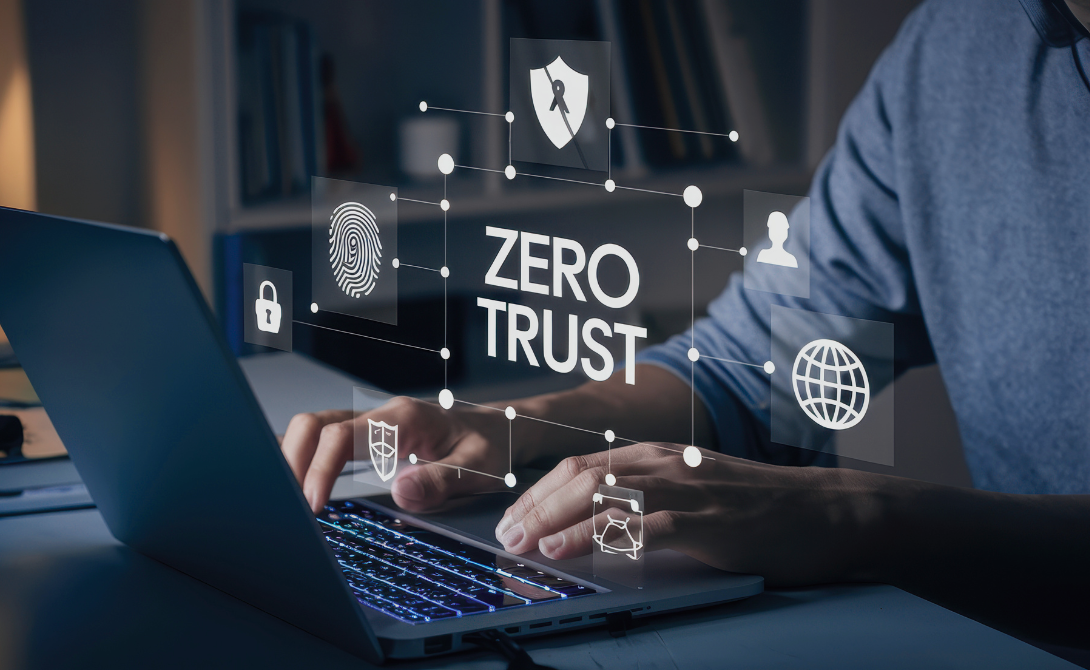Zero Trust in the Private Cloud: Secure Access, Minimize Risk
5. June 2025
Zero Trust in the Private Cloud means access is not granted by default – it is verified, regardless of origin or location. Technology-driven safeguards, clearly defined access procedures, and certified frameworks form the foundation of an environment where no access is allowed without validation.
Zero Trust in the Private Cloud: From Principle to Practice
Zero Trust follows a straightforward rule: every access attempt must be verified – whether from internal or external sources. Permissions must be justifiable, and all activities documented. The goal is a Private Cloud environment where protection mechanisms are consistently enforced – technically, organizationally, and strategically.
This approach is especially critical in regulated industries such as finance, healthcare, or the public sector, where operating sensitive systems requires a robust security model. For these organizations, Zero Trust is a mandatory security paradigm.
Putting Zero Trust into Practice: Access Control, Authorization, Documentation
Least Privilege Access & Role-Based Access Control
All users are granted only the rights required for their specific roles. Highly sensitive areas – such as server rooms – are restricted to a tightly defined group of individuals. This significantly reduces the risk of internal security incidents.
Approval Workflows for Privileged Access
Elevated access rights – particularly administrative permissions – are never assigned automatically. Each permission level follows a defined approval process, typically involving the user’s direct supervisor. Temporary access extensions are also subject to prior approval.
Time-Limited Privileged Access (TPA)
With TPA, users receive elevated access rights for a limited timeframe – for example, two hours. Rights are granted automatically and revoked once the time limit expires. Every step is subject to approval, fully documented, and audit-ready.
Password Management & Access Logging
CONVOTIS leverages password management systems tailored to user roles. Credentials are visible only when required for specific tasks. Any access to additional passwords follows defined exception processes – always documented and traceable.
Routine Reviews & Independent Audits
Zero Trust extends beyond technology to include strict organizational procedures:
• User onboarding, transitions, and departures follow standardized joiner-mover-leaver processes
• Privileged groups – internal and external – undergo regular reviews
• Results feed into our ISO 27001 certification and are audited in line with ISAE 3000 and FINMA requirements
Hardware-Based Key Management
A key element of the security architecture is hardware-based key management. CONVOTIS relies on HashiCorp Vault Enterprise in combination with a PQC-capable Hardware Security Module (HSM). This enables centralized key lifecycle management – independent of application or environment.
The solution integrates seamlessly into existing security frameworks and supports:
• Secure, hardware-backed storage of cryptographic keys
• Separation of application and key management
• Role-based, centrally governed cryptographic access
• Controlled integration with existing policies and access models
In addition, the system supports a wide range of operational use cases, particularly in highly regulated environments:
• Secrets Management: Standardized distribution and handling of sensitive data such as tokens, passwords, and certificates
• Data Encryption: Centralized control of key allocation for protecting confidential data – including during transmission
• VM Encryption: Secure provisioning of cryptographic keys to virtual machines, with support for Key Management Interoperability Protocol (KMIP)
This architecture ensures confidentiality and integrity on both a technical and organizational level – especially in security-critical cloud environments.
Zero Trust Private Cloud in Day-to-Day Operations
At CONVOTIS, Zero Trust is a fundamental part of the Private Cloud architecture – technically implemented, organizationally anchored, and fully documented. For companies operating critical infrastructure, this model provides a reliable foundation for secure, auditable IT processes.






